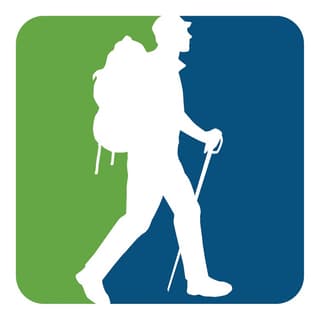If you happen to be in Nepal around mid-April, get ready to celebrate Naya Barsha, which, in the tiny-sounding perfect translation, simply means "New Year," but it is a celebration that is worth much more than just flipping the pages of calendars: it is such a grand one. According to the Gregorian calendar, it usually falls sometime between April 13 and 15, and from the viewpoint of the Bikram Sambat calendar, it is the proper date. Rituals, street parades, family gatherings, and of course, mouth-watering local delicacies are part of the gala program across the nation.
So if you are a curious wanderer or an expat who wants immersion into local life, it is the perfect occasion to delve into the rich culture of Nepal. The places, the best foods to eat, customs to check all provide how to celebrate Naya Barsha life like a local- something one does not forget easily. With all the planning, Approved Holidays has helped put together curated cultural journeys and local insights to help plan your adventure.
Starting With the Feeling: The Meaning of New Year in Nepal
Forget the typical Western-style New Year's parties with fireworks and champagne- the Nepali New Year, or Naya Barsha, is all about family, community, and thoroughly spiritual rejuvenation. It's not fiery and flamboyant like the night's fast pace; the Nepali New Year is slow and soulful in ushering in a new chapter.
It's an opportune time to cleanse the old year's energies, the meaning of a new beginning and new starts. It's a moment of self-reflection, renewal, and connection with loved ones. For many, the beginning of the day starts with a visit to a temple in which local people pray and pujas (the rituals) to gain health, wealth, and prosperity for the coming year in the temples such as Pashupatinath, Kathmandu, or Swayambhunath (Monkey Temple) are said to be crowded with worshippers offering incense, chanting mantras, and making vows for a prosperous year.
These activities involving religious observances are also joined by families in cooking and eating together, blessing each other and purifying the house. This purification is not just cleaning but getting rid of all bad energy and clearing out the old energies that have graced their lives to allow positive energies into the future. This presents an ideal opportunity for community living, where personal connections and tradition trump even the obvious aspect.
As a traveler or expat, the Nepali New Year or Naya Barsha is just the opportunity to dive deep into the culture of the country. Here, you will see some traditions and ceremonies that vary from city to village. Know about local life, mingle with people, and delve into the deeper meaning of the festival. Whether you are celebrating in hectic Kathmandu or a quiet countryside village, the heart of the celebration remains the time to reflect, refresh, and renew.
If you are fortunate enough to be in Nepal during this time, you will have a brilliant experience off by memory participating in the Nepali New Year that one would not easily forget, along with admiring the treasure of this country more profoundly.
Where to Go: Best Places to Celebrate the Nepali New Year
Whether you want culture, scenery, or a party spirit, there are so many places to celebrate the Nepali New Year far and wide across the country. The top places you can visit this festive time are:
Bhaktapur Durbar Square
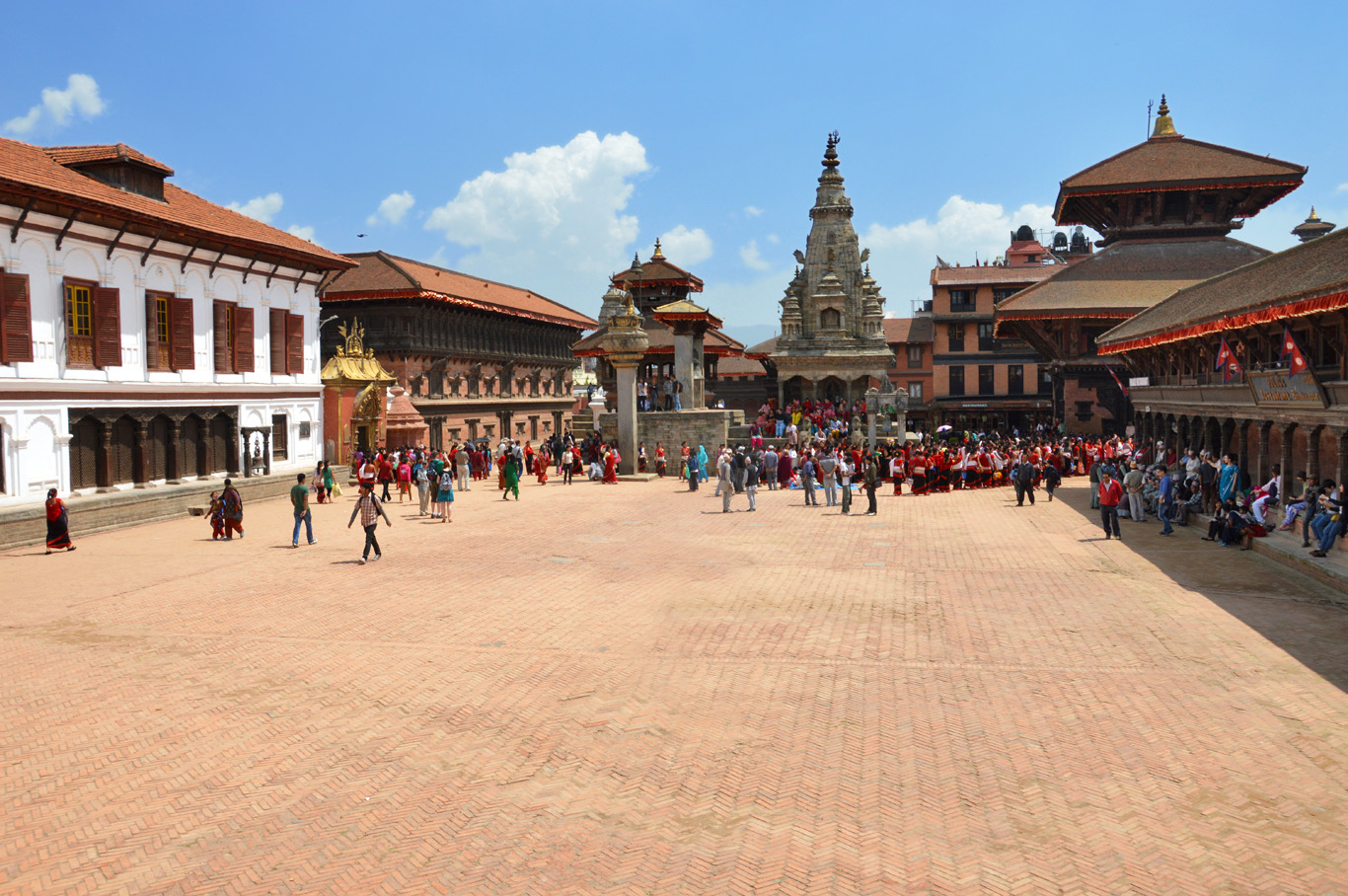
Bhaktapur is the place to visit for history lovers to get the real feel of the authentic essence because it is regarded as one of the most prominent historical sites in Nepal. It is here, at Bhaktapur Durbar Square, that a lot of cultural procession takes place during the Nepali New Year amid stunning medieval architecture. The madal drums beat, locals dressed in their finest traditional attire, and traditional masked dances such as the Lakhey dance can be seen. The food-light is better left to the imagination is a dream come true for foodies! Sample some heavenly street food or khaja, king curd (juju dhau), and sel roti, or even visit this great city to witness everything Nepali during Naya Barsha.
Thamel, Kathmandu
Thamel, Kathmandu, should be your destination if a more excellent city life is your idea of celebration. Known as the tourist heartland of Kathmandu, during the time of the Nepali New Year, Thamel becomes the hub of live music, food stalls, and street parties. A perfect place for solo travelers or younger crowds wanting to mix up local excitement with some international fun. Dance in the streets or sip cocktails in the rooftop bars; Thamel offers bright and vibrant Nepali New Year celebrations in the heart of the capital.
Pokhara Lakeside
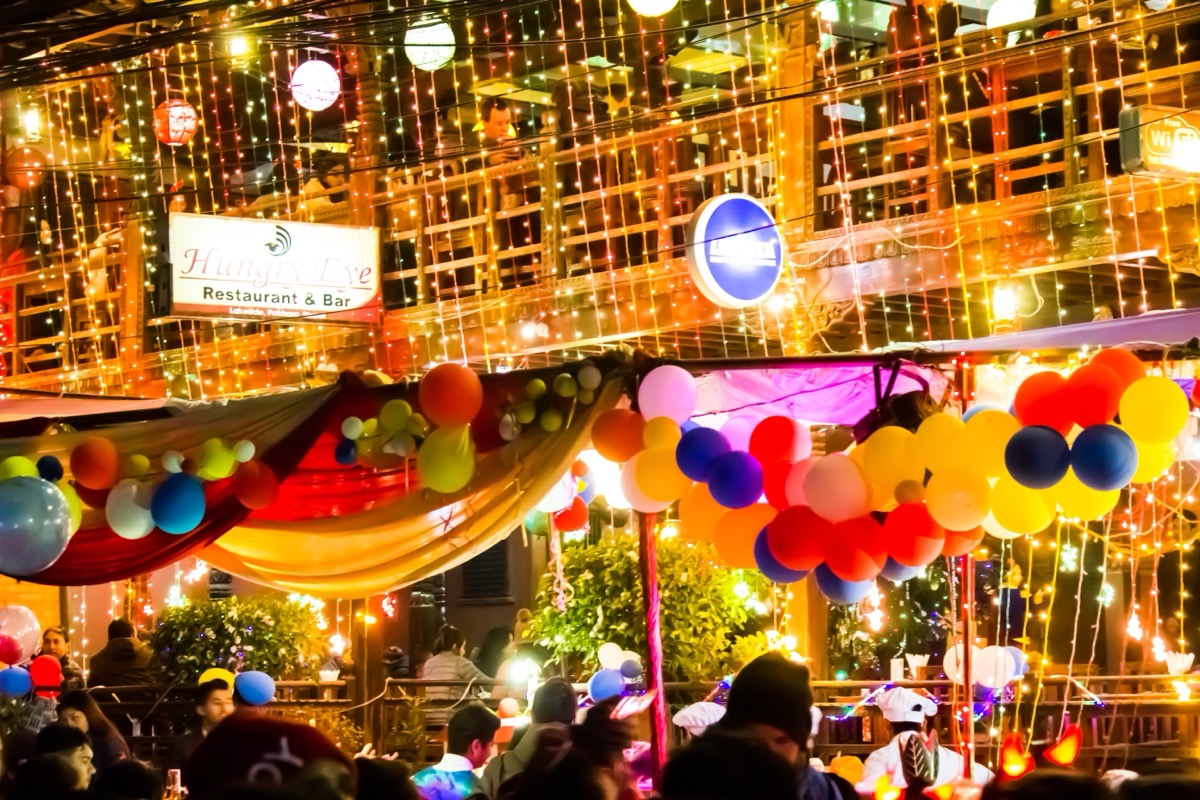
Pokhara Lakeside is the place to be if you want a calm and scenic landscape. One of the most famous places located near Phewa Lake, this area is the locus of many events in which nature is combined with culture. Open-air concerts, local fairs, etc., are held during the Nepali New Year, making it a perfect destination for a chilling celebration. Picture yourself under that warm sun, sipping a lassi and beholding spectacular views of the Annapurna mountain range. That's the sort of place where you want to sit alone, unwind, and sit thinking while enjoying the sights of nature during New Year.
Tundikhel, Kathmandu
If you want to enjoy the patriotic spirit that the Nepali New Year contains, Tundikhel is worth visiting. This large open ground in Kathmandu becomes a venue for government-sponsored functions alongside cultural shows and traditional games during the New Year celebrations. A great venue to see Nepali national pride being exhibited, mingling with the locals, and experiencing traditional performances like folk dances or military parades. Tundikhel is where the spirit of Naya Barsha will have you feeling togetherness and joy in Nepal.
Jatra During Naya Barsha
Bisket Jatra
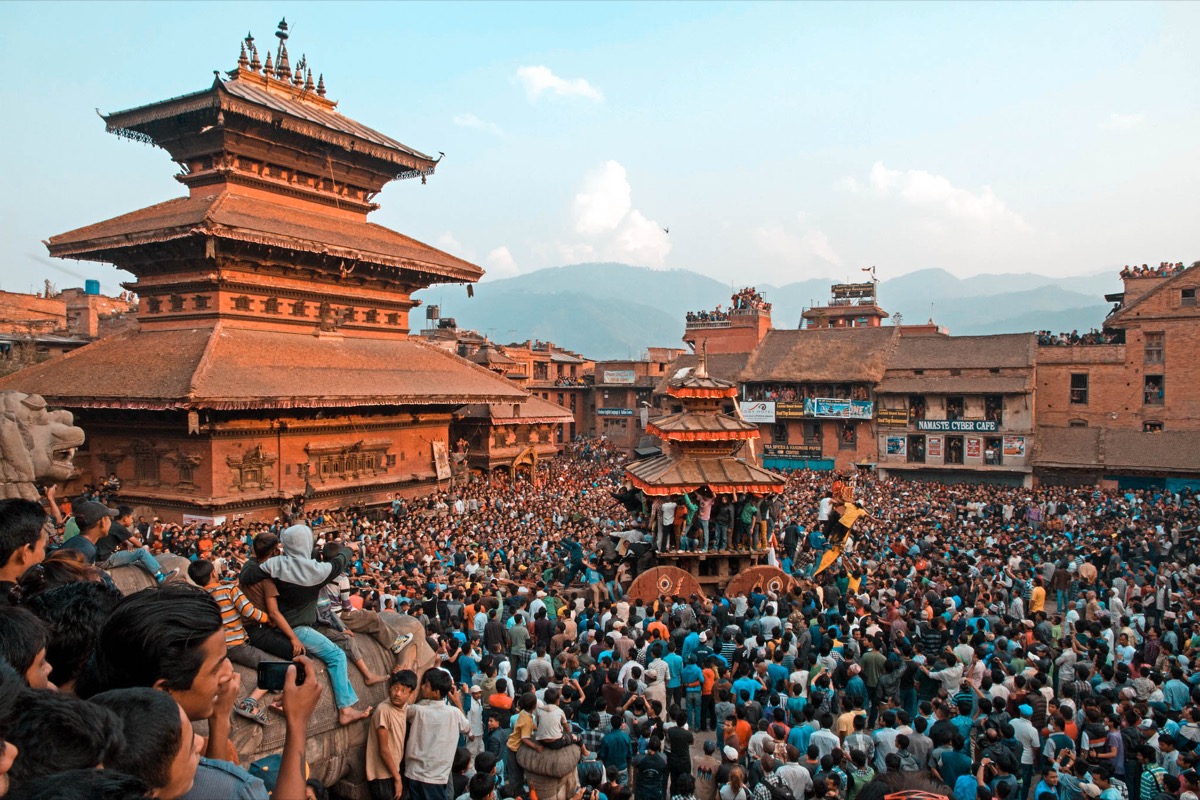
Bisket Jatra in Bhaktapur is one of the grandest festivals marking the Nepali New Year. With chariot processions, traditional music, and drama-filled observances, the festival runs for nine days. The main highlight consists of the pulling of the great wooden chariots with deities Bhairab and Bhadrakali all through the narrow alleys of Bhaktapur. One of the key moments is the tug-of-war between various sections of the town over the mastering of the chariot. In another appealing ritual, a huge wooden pole called "Yosin" is erected in Taumadhi Square with strength and the initiation of a new cycle in mind. The atmosphere is full of vigor and also chaotic while reflecting the very essence of Newar tradition.
Sindoor Jatra

In Thimi, Sindoor Jatra occurs on New Year's Day along with a riot of colors and merrymaking. Early in the morning, residents of Thimi carry small chariots or palanquins with their local deities through the streets. As these processions march along, people throw handfuls of bright red powder (sindoor) on each other and the deities, thereby covering the entire town in red. Traditional Dhime drumming and cultural dance accompany the processions, with the participation of the whole town. This colorful event epitomizes joy, fertility, and new beginnings and forms a signature part of the way Thimi welcomes the New Year.
Bode Jatra
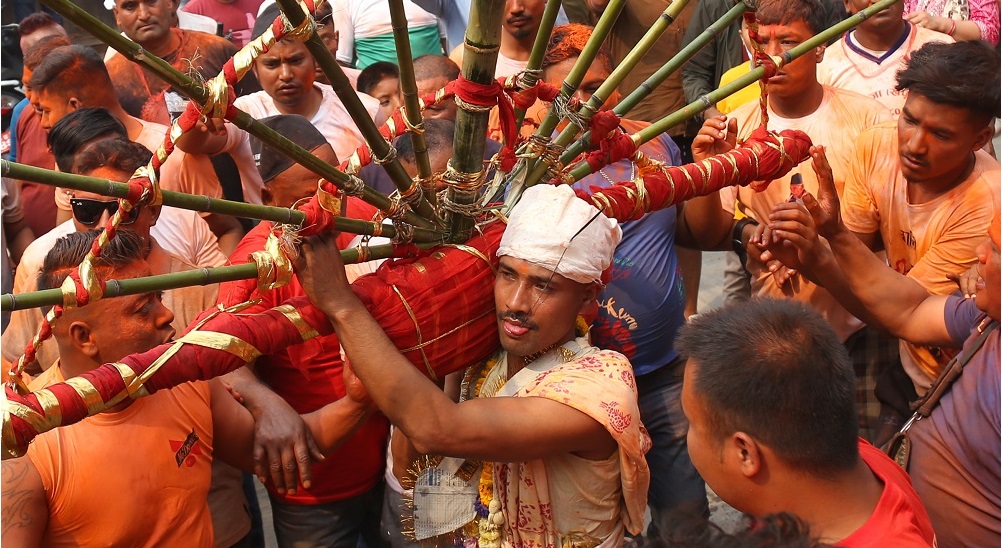
Bode Jatra in Bode, Bhaktapur, is mostly known for its extreme and unique ritual: the tongue-piercing ceremony. Every year during the festival, a local Tamal volunteer pierces his tongue with a long iron spike. The participant then walks around the town, usually in silence, carrying flaming torches, signifying spiritual endurance and dedication. This ritual carries deep symbolism. It is said to chase away evil spirits and bless the local community. Bode Jatra exemplifies spiritual determination and valiance associated with many traditional festivals in Nepal.
What to Eat: Traditional Nepali Cuisine to Try During New Year
Food is the main anchor to any festival celebrated in a country, and New Year in Nepal is an occasion where one gets to taste traditional Nepali dishes. Between street markets and local families, it seems you can eat festive dishes that capture the flavors and essence of the celebration.
Sel Roti: Crispy, Sweet, and Iconic
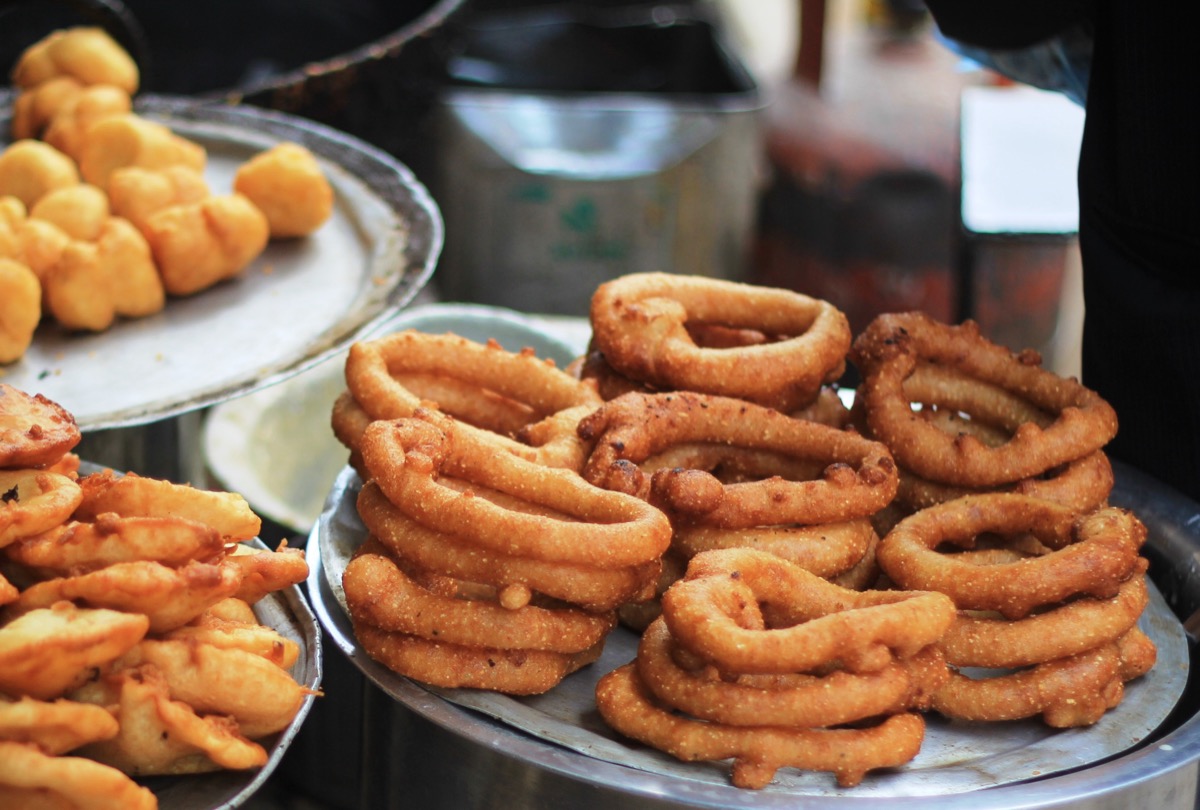
"Sel" actually refers to a ring-shaped rice flour doughnut that became one of the main attractions of Nepali festivals during those times around Naya Barsha. Crunchy and sweet from the inside made fresh in homes and sold roadside during the New Year's celebration, typically enjoyed with yogurt or achar (pickle) and goes perfectly well with a cup of hot milk tea. If you wonder what to eat in Nepal during festivals, place sel roti at the topmost point on your list.
Yomari: sweet newar shel of the food

Newari food yomari is a steamed dumpling, packed with sweet stuffing from molten jaggery or molasses and roasted sesame seeds inside a rice flour shell. More frequently cooked during Yomari Punhi is this particular dish, although it finds a special guest appearance during New Year celebrations in which Kathmandu Valley people celebrate together. This is one item you can't pass without if you want to learn about traditional Nepali sweets and food cultures in Nepal.
Momo: An all-time favorite in Nepal

The whole gamut of Nepali street food would be incomplete without these juicy dumplings. Available the whole year round, during the New Year, however, many restaurants get creative in making their versions in either spicy sauces or even deep-fried. Be it chicken, buff, paneer, or even chocolate momos, they are comfort food at its best in local homes and restaurants during the festival.
Local Raksi: Drink intelligently, celebrate freely
Raksi is the traditional homemade rice liquor usually served at a gathering of fesa tive nature. This drink is strong, earthy, and finds its deeply-rooted connections into Nepali culture celebrations. Raksi is usually served during rituals or toasts, which private its bearer as an insignia of hospitality and respect. Thus, if offered a shot during New Year, sip into it- it's potent, but part of the real experience is the way Nepali do.
Dhido & Gundruk: The Taste of Rural Nepal
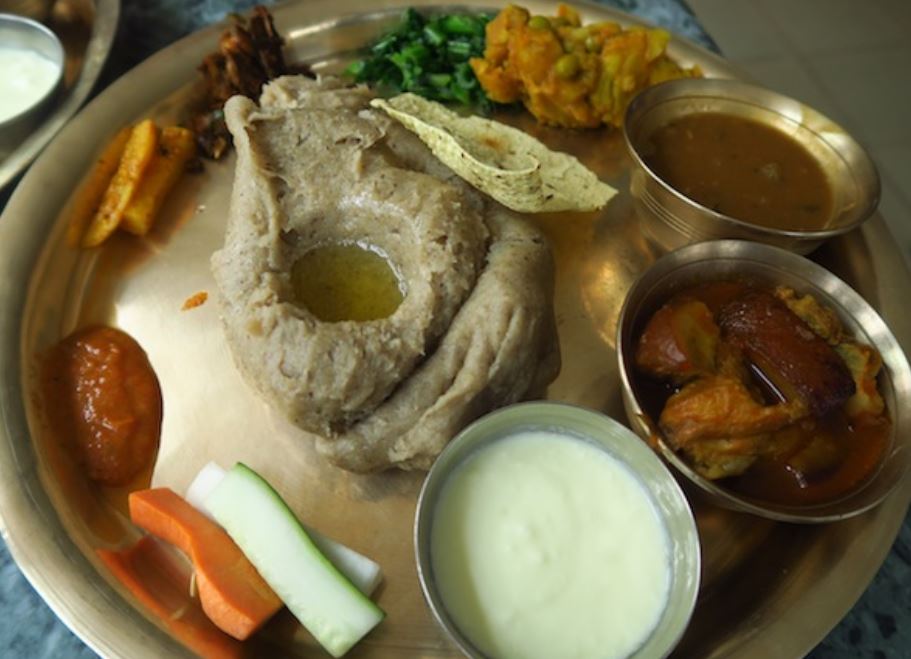
Try dhido, a thick, sticky porridge made of millet or buckwheat flour that is typically eaten with gundruk, a fermented leafy green, for genuine traditional Nepali meals. Within a village or household, this richly spiced and wholesome food is often eaten and treasured in winter. It's exactly the kind of meal that brings you back to traditional agrarian roots in Nepal and is commonly eaten during family festivals.
Chatamari: Nepali "Pizza"
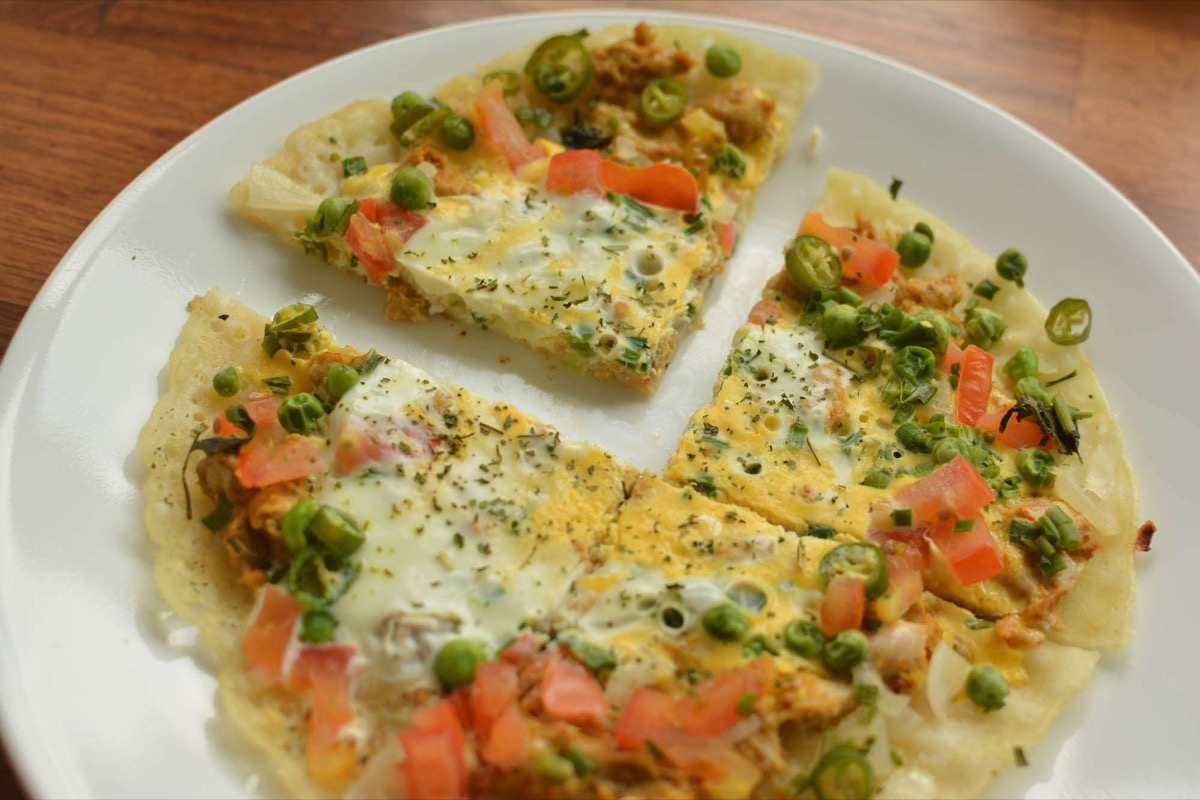
Often seen as Nepali pizza, chatamari is a savory rice crepe made from rice flour, usually with spiced meat, eggs, and vegetables on top. A hearty and delicious option if street food has a category of favorites. The dish is particularly popular with the Newar people, where it is commonly celebrated with New Year festivities.
Samosa: Fried Pastry Pockets
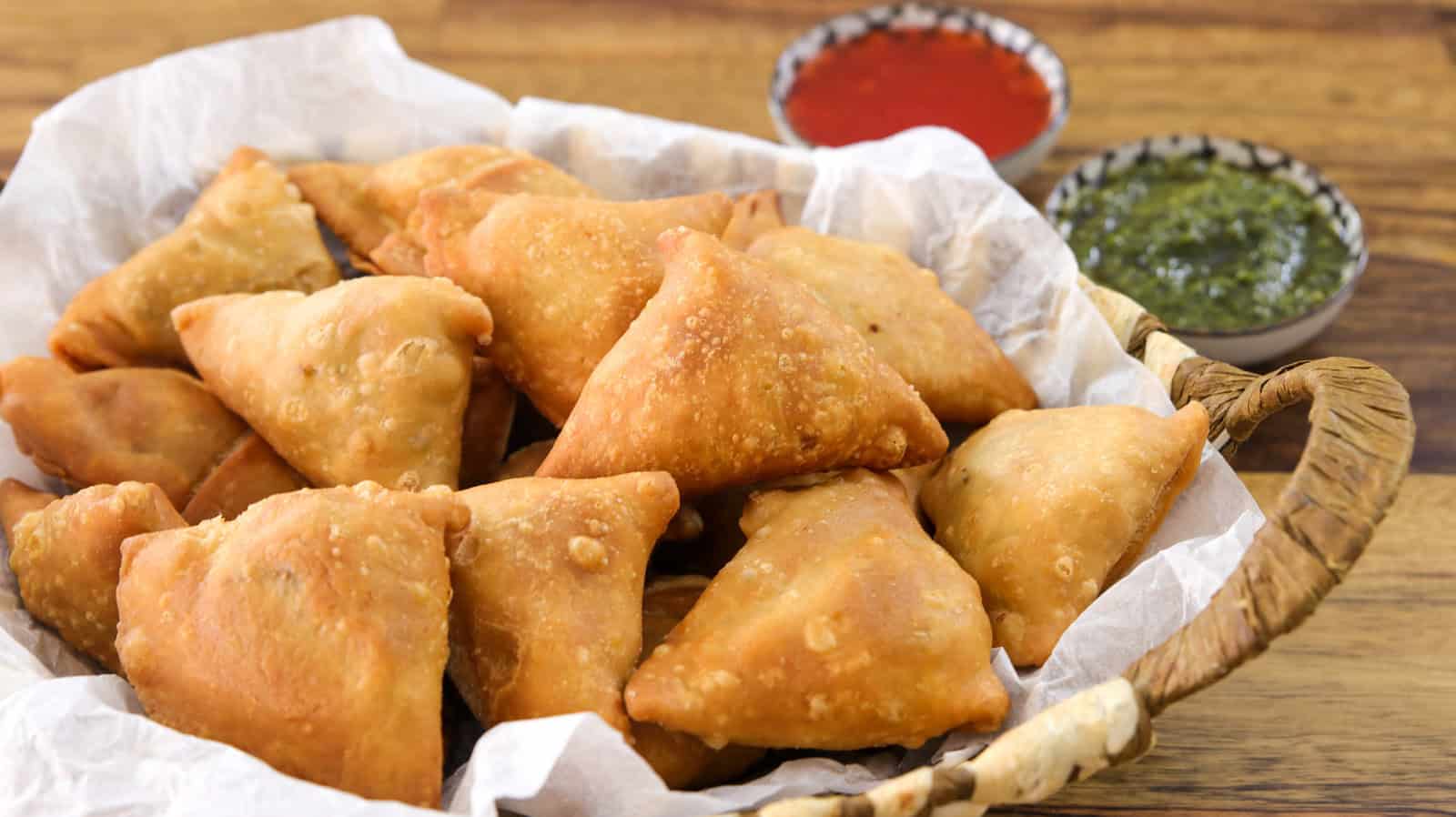
The Samosa is among the beloved snacks of Nepal, yet it has its followers all over South Asia. The deep-frittens are pockets of dough filled mainly with mixtures of spiced potatoes mingled with peas or sometimes meat. They are crunchy on the outside and soft inside, making a perfect munching-hand-food while on those streets. Samosas are popular street vendors' sales in busy marketplaces and outside temples, especially during the Nepali New Year.
Aloo Tikki: Spicy Potato Patties
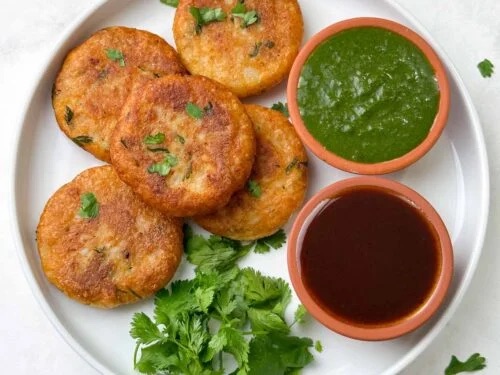
Aloo Tikki, as we know it, is a criteria for spicy mashed potatoes shaped into patties and fried until golden brown. It is served with tamarind chutney and yogurt, an integral ingredient of street food, be it locals or travelers.
Sekuwa: Grilled Skewers
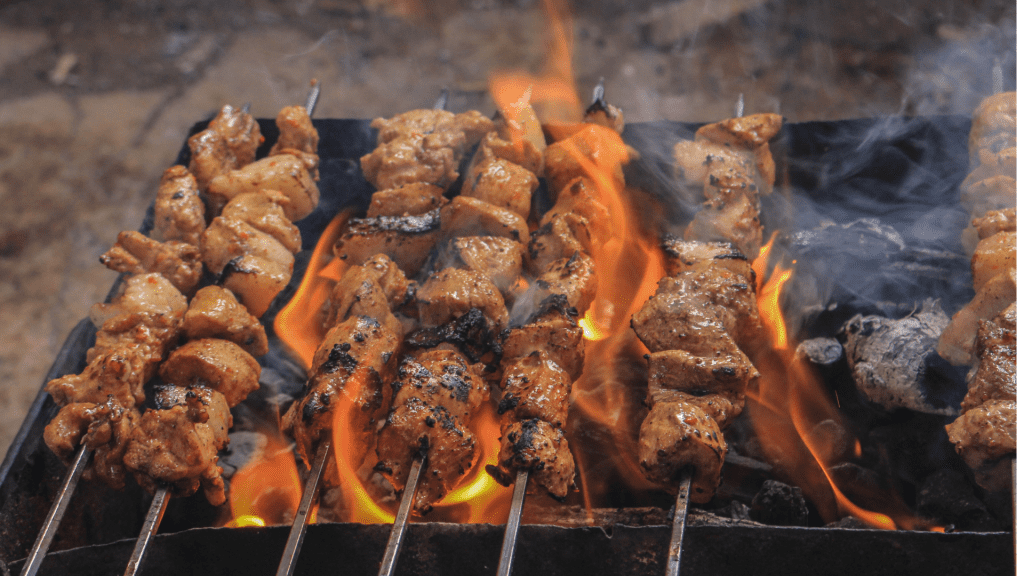
For grill lovers, sekuwa is a must-taste treat. Pieces of meat (supplied difference: buffalo, chicken, or pork) marinated with spices and herbs, skewered, and grilled over open flames. Generally served with achaar (pickle), it has been a famous dish at Nepali festivals.
Chaat: Pungent Spicy Snacks
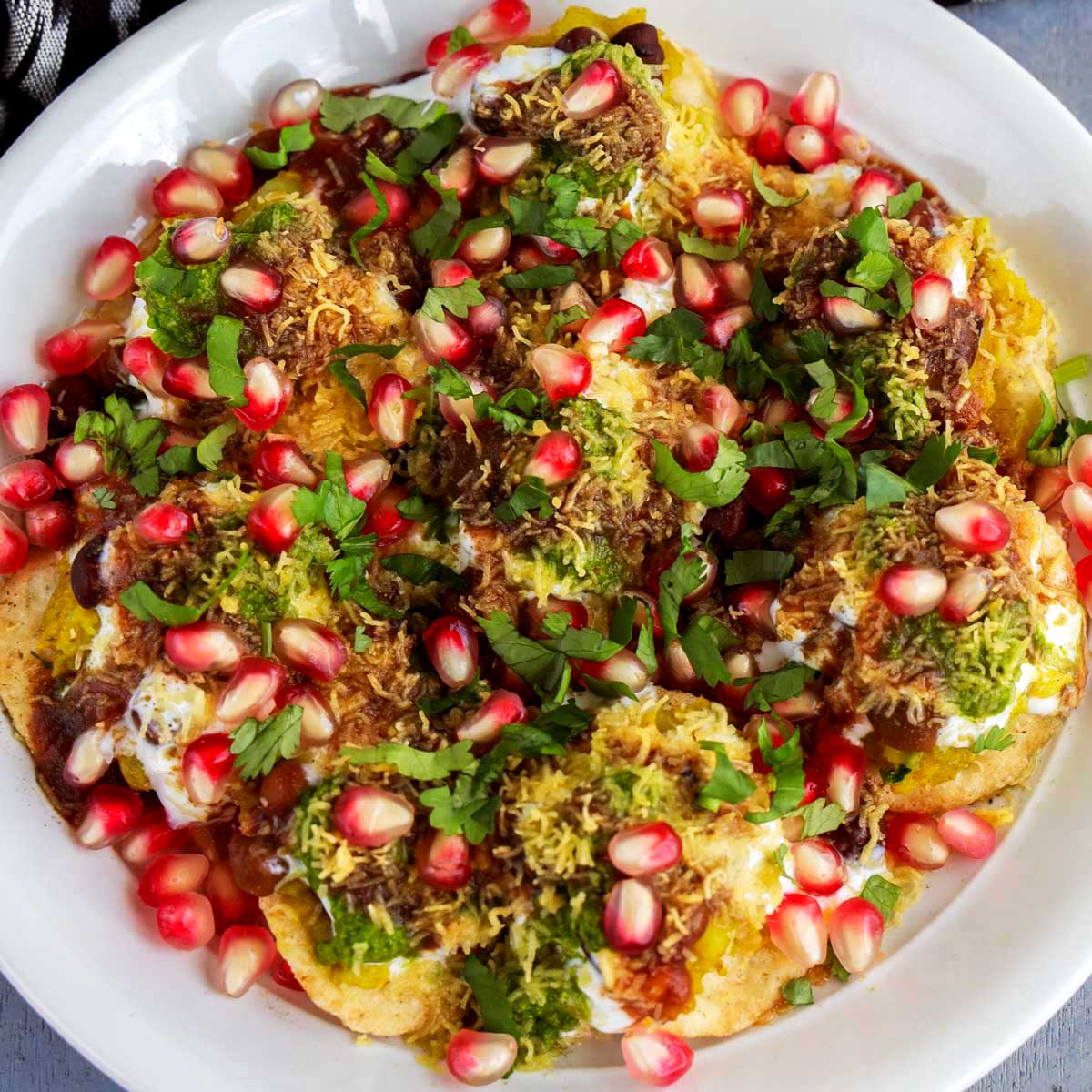
Chaat connotes spicy-sour-savory snacks that are mostly found on the streets of Kathmandu and other towns. The spicy-hot are generally made of puffed rice, boiled potatoes, chickpeas, and tamarind paste and piled high with a myriad of spices for that very memorable taste. Street-side vendors would usually have their variations of chaats like the pani puri (crisp fried puris filled with spicy water) and Chatpate (puffed rice mixed with spices and tamarind).
Nepali New Year: Traditional Observance and Festivities
Nepali New Year, also known as Naya Barsha, is a time of cultural rituals, family relations, and cheerful celebrations. It is a time of history-studded purification and spiritual awareness as it welcomes new beginnings. Well, if you are here in Nepal during the year, this will be the complete soaking experience of local cultures and the best way to enjoy a colorful celebration.
Join a Mela (fair)
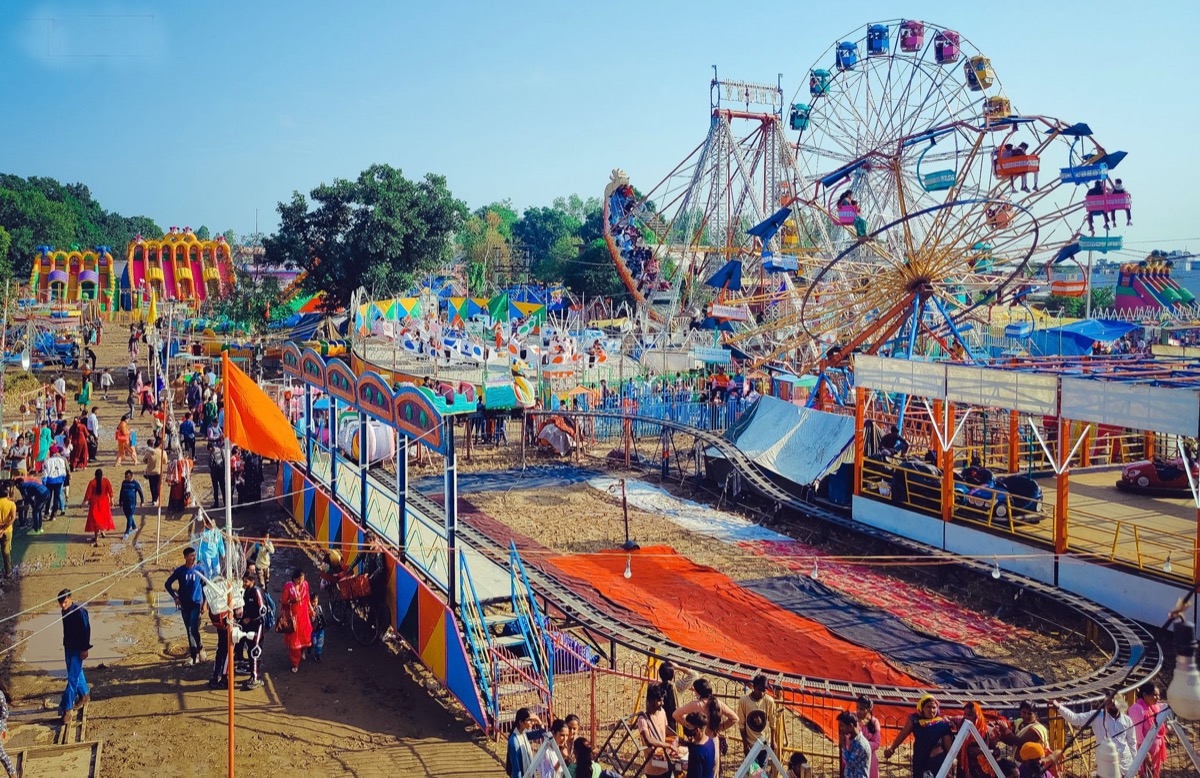
Mela, or local fairs, are highlights during the Nepali New Year celebrations. The fairs are held in rural villages and also in the city centres, creating an aura of festivity. Expect traditional cultural performances, handicrafts, local food stalls, and bingo-style fairs with little rides. In rural areas, melas provide good social gatherings whereby people from close-knit villages come together to celebrate the New Year. Whereas, in a city like Kathmandu, a modern twist will be infused, enlivened with concerts, street art, and dance competitions.
Visit a Temple
Most of the Nepalis are so much signified by visiting the temple during the start of every new year/naya barsha, and pray for prosperity, good health, and blessing in the coming years. Pashupatinath in Kathmandu and Swayambhunath, or the Monkey Temple, are usually crowded during Naya Barsha. The locals perform pujas- rituals to the deities in the hope of their blessing. If you happen to be in Kathmandu, you will enjoy watching thousands of devotees light incense and pray, really adding that special touch to an experience- Spiritual. Even if this is or has ever been your orientation, it surely has a very calming, reflective atmosphere.
Cleaning
A major Nepali New Year custom is cleaning. Along with cleaning, many Nepalese clean their homes and courtyards as a symbolic gesture for clearing away the old and giving way to the new. Cleaning has a practical meaning: overcoming negativity and inviting positive energy. So, in a home where you are entertained by a Nepali family, expect to be asked to help with some tidying up or handed a broom to sweep away the old year's negativity.
Celebrations in the Community
Community celebrations form a crucial part of celebrating the Nepali New Year. Traditionally performed dances, Deuda and Gorkha Dance are organized in more rural parts of the country, making it quite a lively celebration. While the Jatra processions would feature some colorful and lovely parades with music, chanting, and dancing by some people in certain regions, it would always be a major part of the Nepali New Year festival, exposing cultures and traditions.
Religious Ceremonies and Offerings
The greatest role of religious rituals is expected to be performed in the celebration of the Nepali New Year. Visiting temples to offer prayers and perform puja, hoping for the blessings of health, prosperity, and happiness in the new year, is a practice that most people follow. The majority would also worship Kala Bhairab, the God of Time, to respect and indicate the turn of a new year. Such rituals would be included in the Buddhist New Year like going to stupas such as Boudhanath and Swayambhunath to pray for peace and harmony.
Gatherings and Parties
Social gathering forms a greater proportion of celebrations in the Nepali New Year. Family or friends join together to share the traditional meal with blessings and exchange gifts. Public events like concerts and cultural performances include dance parties organized in mostly these cities during events like Kathmandu, which marks celebration. Modernity yet retains part of the tradition with excellent attraction from locals and foreigners.
Naya Barsha is probably the one time when culture blends with every aspect of faith, tradition, and conviviality, and it becomes a grand celebration in Nepal. It creates a memorable festival experience that includes visiting temples, joining processions in the streets, or simply enjoying some of the local delicacies like sel roti and momos.
Whether you explore Bhaktapur, enjoy the lively atmosphere in Thamel, or relax in Pokhara, Approved Holidays gets you ground-level cultural journeys and local insights to experience the true spirit of the Nepali New Year/NayaBarsha. Celebrate like a local and make long-term memories with Approved Holidays.
FAQs
On which date is the Naya Barsha in Nepal?
Naya Barsha generally comes within the range of 13 to 15 days in April, according to the Gregorian calendar and as per the Bikram Sambat calendar of Nepal.
Naya Barsha Traditions?
It includes temple visits and puja, household cleansing for purification, and family and community gatherings, referring again to renewal and reflection.
What are the different foods eaten during Naya Barsha?
The main dishes anyone must try are sel roti (sweet rice doughnut), yomari (steamed dumplings with jaggery), momo (dumplings), local raksi (rice liquor), and dhido (millet porridge). These foods are common during the New Year celebration.
In which place can you celebrate Naya Barsha in Nepal?
Bhaktapur Durbar Square might be the place where Naya Barsha is better celebrated in cultural processions. Thamel, Kathmandu, comes with its active street parties, Pokhara lakeside gives peace and serenity combined with amazing views, and Tundikhel, Kathmandu, gains attention for its patriotic events.
Are visitors allowed to celebrate Naya Barsha along with the people?
Yes, they participate in all these festivities. It is amazing for tourists to view most of the riches and arts in Nepalese culture and traditions and local festivities.
What can I expect if I visit Nepal during Naya Barsha?
Expect quite a lot of religious ceremonies, street parties, family gatherings, and cultural displays. One of the most vibrant seasons featuring festivity and rejuvenation, sharing much in togetherness, where one could know Nepali culture more.

